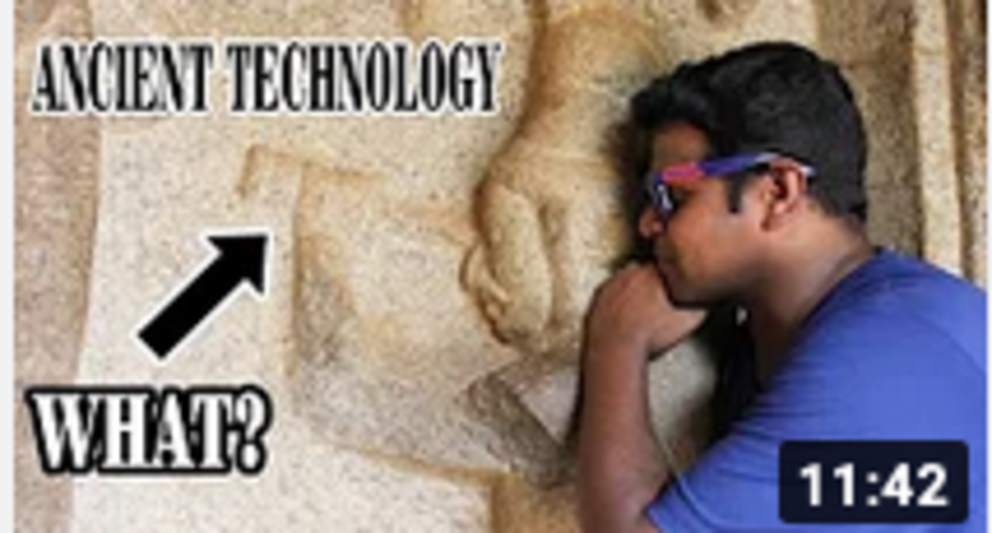India's hidden secrets revealed? Evidence of ancient engineering technology
Hey guys, today we are going to look at an ancient Hindu architect called Vishvakarman, and how everything we know about him is wrong. This 900 year old carving shows Vishwakarman with multiple heads and holding various weapons - this is the standard explanation we get. But that is pure nonsense. If he has multiple heads, then how come the center head looks older while the other 2 heads show younger faces. And look at the weapon on the left, it is not a weapon at all, this head is actually looking into this device. Now who is Vishwakarman? According to Ancient Indian texts, Vishwakarman was the architect who engineered great cities like Dwaraka and Ancient Temples with insane perfection. An architect does not need weapons, so what is this device he is looking through? He is using a theodolite.
Now what is a theodolite? Have you ever wondered why you always see civil engineers standing and looking through something? That is a theodolite, it is similar to a small telescope. And look at the similarity of the modern theodolite and how the engineer is looking through it and how the ancient theodolite is shown and how this face is clearly looking through it. It is a perfect match. But what is the purpose of a theodolite? It is used to make sure that an area is perfectly flat or horizontally leveled before construction starts. In real life, most areas have horizontal differences and how do you make it flat? On one end of the site, you have the theodolite and on the other end, you must place a leveling rod or a leveling staff, which has markings. This is exactly what we see in the other hand in this statue. This is the leveling rod, of course the marking are gone now because of erosion, but it is quite visible in other carvings of Vishwakarman. For example it is clearly visible in this statue - This is from the Sun Temple at Modhera, built around 1000 years ago. Other statues as well show clear markings, I had initially thought it was just a simple ruler or a line gauge, but now it is clear that Vishwakarman was using a leveling rod and a theodolite to survey construction sites. Here you see another carving where he is clearly holding a leveling rod in one hand and a theodolite in the other hand.
If you look at ancient temples, one of the things we marvel about is, how they were able to achieve such flatness of the ground before they started construction. Even on mountain tops, they were able to create perfectly flat plane and then build temples. Now, we can fully understand how they achieved this. The ancient builders carved the details quite clearly, this is not a multi-headed god. They are showing multiple people working the same site, one guy is looking through the theodolite, the other guy is in charge of the leveling rod, and the older guy with the beard is the supervisor. Another 1000 year old statue shows the same iconography with 2 younger guys on the side holding the same devices with the older guy in the middle, this is quite clear how they have carved Vishwakarman. Remember how civil engineers make 3d drawings, these three faces could be indicative of that as well.
This is very interesting because we have always thought that Vishwakarman was one person, but perhaps it denotes a team of ancient engineers, just like how a team of engineers works on a site today. And I have been researching Vishwakarman for many months now, and I have seen various combination of faces in ancient temples. Sometimes All young faces, sometimes all older faces and sometimes a combination of both young and old.
Ok, so I have shown you how Vishwakarman achieved perfect horizontal level, in the X axis, but how did they achieve vertical perfection, in the Y axis. Because when you examine ancient Indian structures it is amazing how you never see tilted monuments, temple walls do not have any tilt, unless the builders wanted a tilt or a slope. Every angle was built perfectly. Now, what do we use to measure vertical perfection today? This is called a plumb bob, It has the shape of an onion or a top, like a spinning top with one half looking like a bulb and the other half with a pointed end. And that's exactly what we find in Vishwakarman's hand. I have seen many many carvings and it is unbelievable, but what he is holding looks exactly like a plumb bob. What is even more surprising, today we have mechanized plumb bobs, we can push a button with one finger, and the string comes out. But they must have used the same button system in ancient times as well. Look at his finger. Why is he shown with one finger on a specific spot?
This is my Patreon account if you like to support me - https://www.patreon.com/PraveenMohan
Facebook.............. https://www.facebook.com/praveenmohan... Instagram................ https://instagram.com/praveenET Twitter...................... https://twitter.com/IamPraveenMohan
Email id - [email protected]

